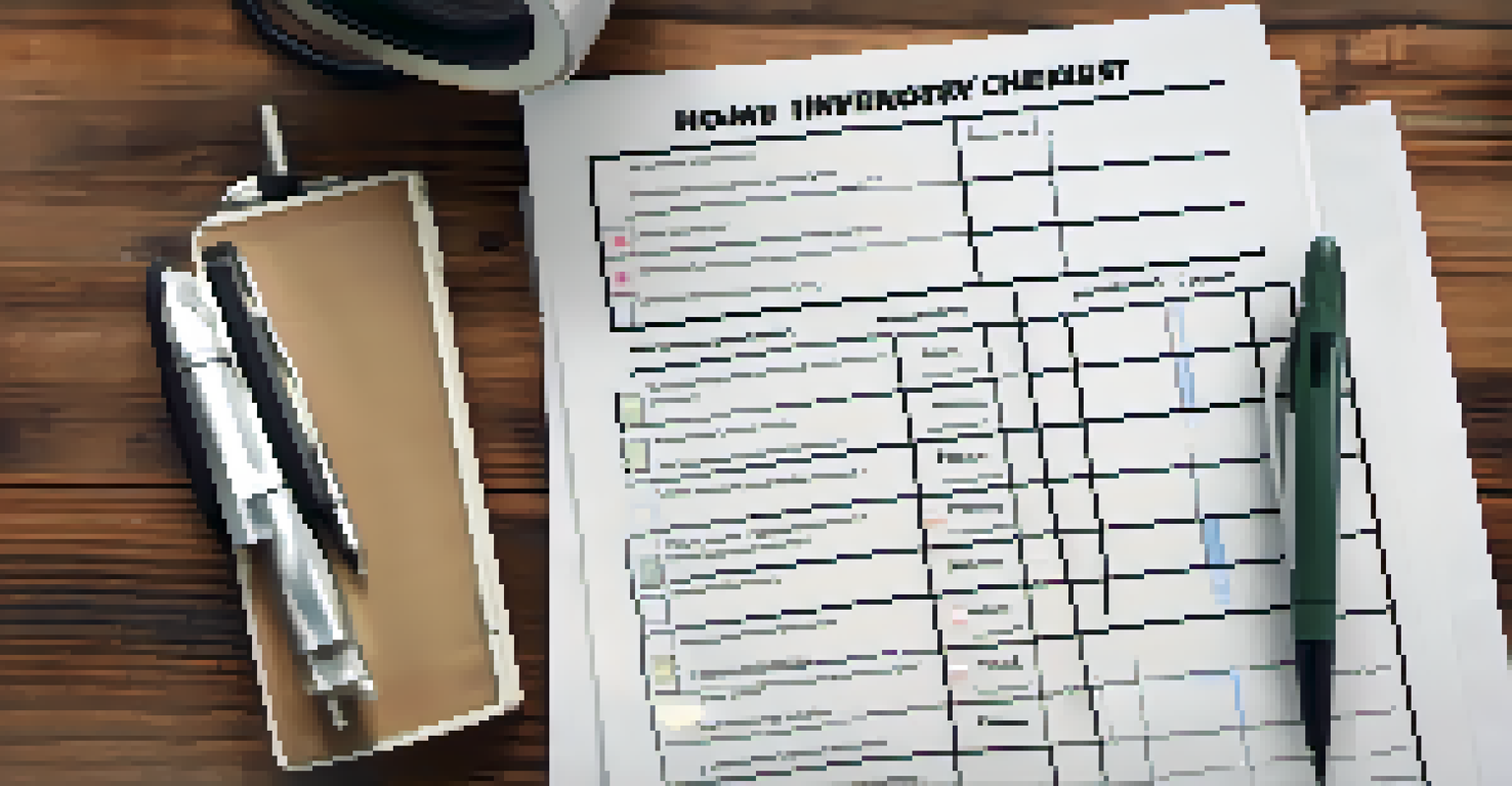Comprehensive Guide to Home Insurance for New Owners

Understanding the Basics of Home Insurance
Home insurance is essentially a safety net for homeowners, protecting your property and belongings from unforeseen events. It typically covers damage from incidents like fire, theft, or natural disasters, giving you peace of mind. By understanding the basics, you can make informed decisions tailored to your needs.
Insurance is a safety net for homeowners, protecting their property and belongings from unforeseen events.
New owners should know that home insurance isn’t just about the structure; it also covers personal belongings and liability in case someone gets injured on your property. For instance, if a neighbor slips on your icy walkway, your policy can help cover their medical expenses. This comprehensive approach ensures you’re protected on multiple fronts.
It's crucial to assess your situation and choose a policy that fits your lifestyle. For example, if you have valuable items like art or collectibles, consider additional coverage. This way, you won’t be left in the lurch should something happen.
Types of Home Insurance Policies Explained
There are several types of home insurance policies, each designed to meet different needs. The most common is the HO-3 policy, which covers your home and belongings against a wide range of perils. Understanding the differences can help you select the right policy for your situation.

Another popular option is the HO-1 policy, which offers basic coverage for specific risks. While it’s cheaper, it might leave gaps in your protection. On the other hand, HO-5 policies provide more extensive coverage, making them ideal for high-value homes.
Home Insurance Basics Explained
Home insurance protects your property and belongings from risks like fire and theft, providing essential peace of mind.
Consider your specific needs and risk factors when choosing a policy type. For instance, if you live in an area prone to earthquakes, you may need additional earthquake coverage. Tailoring your policy ensures you’re not just protected, but adequately covered.
Key Coverage Options to Consider
When selecting a home insurance policy, understanding coverage options is vital. Standard policies typically include dwelling, personal property, liability, and additional living expenses. Each coverage type plays a crucial role in safeguarding your assets and finances.
By failing to prepare, you are preparing to fail.
For example, dwelling coverage protects the physical structure of your home, while personal property coverage secures your belongings. If a fire damages your home, dwelling coverage would help you rebuild, while personal property coverage would reimburse you for lost items.
Additionally, consider adding riders for valuable items or unique circumstances. Riders can provide extra protection for high-value possessions like jewelry or electronics, ensuring you’re not underinsured. This comprehensive coverage approach can save you from significant losses down the road.
Factors Affecting Home Insurance Premiums
Numerous factors influence your home insurance premiums, and understanding them can help you save money. Key elements include the location of your home, its age, and the materials used in its construction. For instance, homes in areas prone to natural disasters may incur higher premiums due to increased risk.
Your credit score also plays a significant role in determining your rate. Insurers often use credit history as a predictor of risk; a higher score usually leads to lower premiums. Similarly, the claims history of your property can impact your rates, as frequent claims may signal higher risk to insurers.
Types of Policies to Consider
Understanding different home insurance policies, such as HO-3 and HO-5, helps you select the right coverage for your needs.
By recognizing these factors, you can take proactive steps to potentially reduce your premiums. Simple actions like improving your credit score or making your home more disaster-resistant can lead to savings. It’s worth taking the time to evaluate how these elements apply to your situation.
The Importance of a Home Inventory
Creating a home inventory is an essential step for any new homeowner. This list outlines all your belongings, making it easier to file a claim if disaster strikes. By documenting your possessions, you ensure that you’re adequately compensated for any losses.
Start by walking through your home and recording important items, including receipts, photos, or videos. This not only helps in claims processing but also assists in determining the appropriate amount of personal property coverage you need. It’s a simple yet effective way to protect your investment.
Additionally, keeping your inventory updated is crucial as you acquire new belongings. Regularly reviewing and adjusting your list ensures you’re always prepared. This proactive approach can make a significant difference in the aftermath of a claim.
Shopping for Home Insurance: Tips and Tricks
Shopping for home insurance can be overwhelming, but knowing where to start can simplify the process. Begin by gathering quotes from multiple providers to compare coverage options and premiums. This helps you find a policy that meets your needs without breaking the bank.
It’s also beneficial to work with an insurance agent who can guide you through the intricacies of different policies. They can help clarify coverage details and answer any questions you might have. This personalized assistance can make your purchasing experience much smoother.
Importance of a Home Inventory
Creating and maintaining a home inventory ensures you are prepared to file claims and receive adequate compensation for lost items.
Lastly, don’t hesitate to ask about discounts. Many insurers offer savings for bundling policies, installing security systems, or having a claims-free history. Taking advantage of these opportunities can lead to significant savings on your premiums.
Understanding the Claims Process
Knowing how to navigate the claims process is essential for new homeowners. In the event of damage or loss, the first step is to document everything thoroughly. This includes taking photos, recording details, and gathering any relevant receipts to support your claim.
Once you’ve documented the situation, contact your insurance provider to report the claim. They will guide you through the next steps and inform you about the necessary forms and information required. Understanding this process can help alleviate stress during an already challenging time.

After submitting your claim, be prepared for an adjuster to assess the damage. They will evaluate your claim and determine the compensation you’re entitled to. Staying organized and responsive can expedite the process and ensure you receive the support you need.